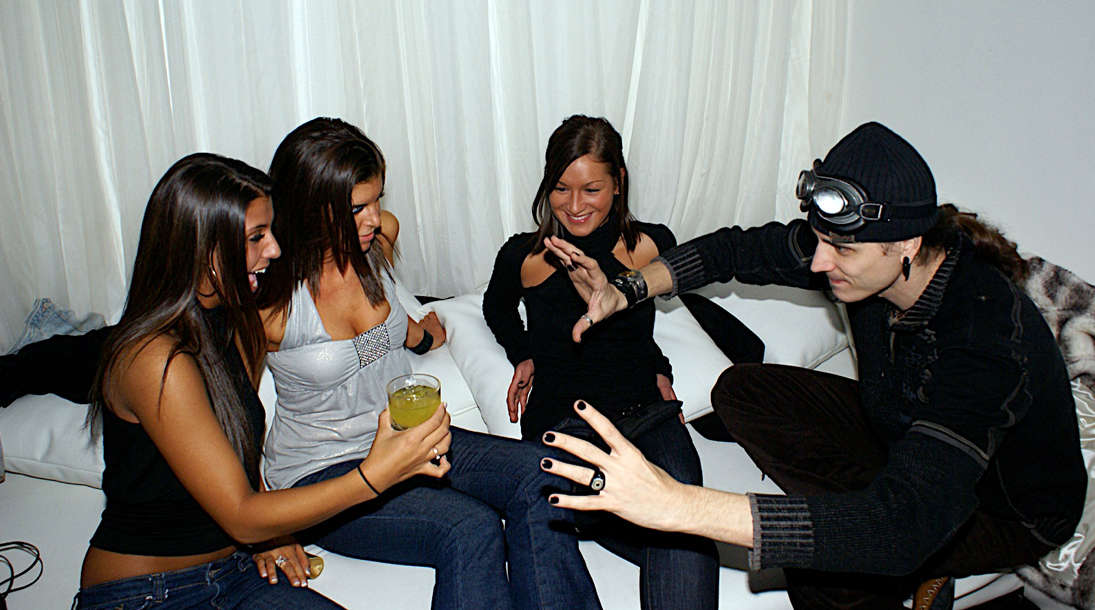Pick up artist tactics
5 Pick-Up Artist Techniques Narcissists, Sociopaths, and Psychopathic Players Use To Unsettle Their Targets
We all know that narcissistic and sociopathic individuals use specific manipulation tactics to unsettle their victims. But did you know that some of the techniques they use overlap with that of pick-up artists? Not all pick-up artists are narcissists, but many narcissists are natural pick-up artists. For narcissistic manipulators, this type of pick-up artistry comes organically as a result of learning how to con others from an early age: they dont need to pore over books like The Art of Seduction or The Game for hours in order to master the art of mimicking, love-bombing, and devaluing others.
Many sociopathic predators have been using manipulation their whole lives to get ahead and thus have are far more sophisticated tactics in their arsenal of psychological terrorism. As a result, their scripts are more convincing, especially if they are clever wolves in sheeps clothing.
Yet some predators do use similar techniques as pick-up artists as part of their nefarious toolbox. Here are the top five tactics you should look out for, especially if you suspect you may be involved with a player on the narcissistic spectrum:
Negging is very similar to the covert put-down or backhanded compliment used by narcissists. A neg is a comment meant to undermine a persons self-confidence so that they are more vulnerable to advances from the perpetrator.
In the pick-up artist community, negs are used especially when the target is perceived to be more attractive or appealing than the pick-up artist. It allows the pick-up artist to bring down the target a notch or two so that the victim feels compelled to win the predators approval or validation. For example, a male pick-up artist may neg a highly attractive woman by saying something like, If youre lucky, I may even buy you a drink. In this scenario, they know this woman is used to men fawning over her, so they neg her in hopes that she will think hes different and strive to seek his approval.
While negging certainly doesnt work on everyone, there has been research that indicates that women who have their self-esteem temporarily lowered tend to find a male stranger who approaches them more attractive; both men and women with lowered self-esteem also tend to be compliant and agreeable to the requests of others (Walster, 1965; Gudjonsson and Sigurdsson, 2003).
Negging can be especially dangerous if youre not aware youre being negged.Researchers believe that if you feel flawed or defective yourself or already struggle with your self-esteem, youre likely to expect less from a potential partner and have a heightened need for acceptance and affection.
Those with trauma histories or prior relationships with narcissists should always be wary if they are met with these types of comments and resist internalizing them. Instead, they must immediately detach as soon as such a comment is made because its likely such negging will escalate, especially if the manipulator is particularly sadistic and wants to provoke a reaction.
Remember that these comments are meant to unsettle you for a reason its because the predator in question believes you are above them in some way and wants to take you down. Consider it a compliment that they’re willing to stoop so low to bring you low – albeit, a backhanded one.
In his book, The Art of Seduction, Robert Greene suggests that seducers create an aura of desirability by pretending they have many suitors (whether thats the reality or not). This involves creating a perceived sense of competition so that the target is compelled to win this highly desirable persons attention and affection. As Greene writes:
“Few are drawn to the person whom others avoid and neglect; people gather around those who have already attracted interest. To draw your victims closer and make them hungry to possess you, you must create an aura of desirabilityof being wanted and courted by many. It will become a point of vanity for them to be the preferred object of your attention, to win you away from a crowd of admirers.
Build a reputation that precedes you: If many have succumbed to your charms there must be a reason.”
Narcissists do this as one of their primary tactics in relationships: it is known as triangulation and harem-building. They will often make themselves look like they are highly sought after or have many options. They manufacture love triangles by constantly bringing up their exes, people theyve dated or people who were apparently obsessed with them. They may indulge in stories about how people throw themselves at them or of being hit on excessively. They may do this all while throwing on an air of loyalty and devotion to you to make you feel special even while putting you on edge and making you feel off-balance and uncertain.
If you find that on a date someone talks at length about their former partners or those they find attractive, orthat they flirt with others around them (such as the waitstaff), consider this a major red flag. These are automatic dealbreakers because such tactics are used to dismantle and unsettle you. Break the triangle by removing yourself out of the equation altogether. A healthy partner will strive to make you feel cherished and secure an unhealthy one will manufacture and feed insecurities. You never have to compete for a worthy partners attention.
Break the triangle by removing yourself out of the equation altogether. A healthy partner will strive to make you feel cherished and secure an unhealthy one will manufacture and feed insecurities. You never have to compete for a worthy partners attention.
Narcissistic individuals know that getting a victim to trust them and feel comfortable around them is crucial to getting them invested and vulnerable. Narcissists know how to do this in spades at the beginning of relationships. They assess their victims vulnerabilities and morph into what they may be missing from their lives. In the honeymoon stage of the relationship, they spend a lot of time grooming their victims.
Pick-up artists and narcissists alike use the excessive amount of time paired with early disclosure of personal details to manufacture a false sense of intimacy which does not exist yet. Such a method has actually been scientifically proven to be effective. Arthur Aron and his fellow researchers (1997) discovered that intimacy between two strangers could be enhanced by having them ask each other a series of personal questions. As the authors of the study note, “One key pattern associated with the development of a close relationship among peers is sustained, escalating, reciprocal, personal self-disclosure.”
As the authors of the study note, “One key pattern associated with the development of a close relationship among peers is sustained, escalating, reciprocal, personal self-disclosure.”
Narcissists use this technique to learn more about their victims weak spots to use against them in the future; pick-up artists use it to escalate sexually. Pick-up artists advocate for what is known as the seven-hour rule regarding the time that should be spent engaging with the target. Coined by pickup artist Mystery, this rule is used to describe the amount of time usually spent with a woman before going for the close in other words, sex.
If you are on a first date with a narcissistic player or pick-up artist, for example, you may find them prolonging the date and telling you seemingly romantic things like, I dont want this night to end do you? or pushing you to make a second date before youve even finished your first.
This is a strategic move to heighten the level of investment and increase trust in the victim. It is advised in the PUA community that such time be spent getting to know the target, disclosing things about yourself, and getting the target to disclose about themselves, with topics becoming more and more intimate. That way, the target comes to perceive you as a potential sexual or romantic partner early on.
It is advised in the PUA community that such time be spent getting to know the target, disclosing things about yourself, and getting the target to disclose about themselves, with topics becoming more and more intimate. That way, the target comes to perceive you as a potential sexual or romantic partner early on.
To counteract this method, resist disclosing personal details when a date reveals intimate information so prematurely. Remember that anything and everything you tell a narcissistic individual or pick-up artist can and will be used against you – whether it’s used to get you in their bed or to mess with your head.
Both pickup artists and psychopaths love to engage in what is known as emotional anchoring to better influence and control you. Anchoring is a neuro-linguistic programming (NLP) term used to describe the process in which an internal response becomes associated with an external or internal trigger. This method allows for that response to be accessed automatically whenever that trigger is present. Similar to conditioning, anchoring is a way for the predator to become associated with certain memories and emotional states in your psyche to evoke a certain response from you.
Similar to conditioning, anchoring is a way for the predator to become associated with certain memories and emotional states in your psyche to evoke a certain response from you.
The anchors can be anything such as specific gestures, a certain tone of voice, a scent, a physical movement or touch on a specific part of your body, a certain location, a song, a word – anything you can think of is fair game. The most effective anchors are ones that are unique (so that they aren’t indiscriminately triggered), repeated to be associated with a specific emotional state, and are conditioned during times of peak emotional intensity.
Narcissists use general emotional anchoring and conditioning throughout the abuse cycle to associate pain and pleasure. Pick-upartists primarily use emotional anchors to “retrieve” and make you associate pleasurable states with them. However, bothtypes can engage in seduction-withdrawal and hot-cold behavior to create compulsive “chasing” and behaviors in their victims. Simply put, anchoring is part of the overall conditioning that makes you addicted to a predator.
Simply put, anchoring is part of the overall conditioning that makes you addicted to a predator.
Seduction-Withdrawal and Hot/Cold Behavior
Both pick-up artists and narcissists alike use “seduction-withdrawal” methods to anchor themselves as important in their victim’s minds. A pick-up artist may pair a blissful date with a moment of coldness to create a sense of pain, pleasure, fear,and excitement simultaneously in his (or her) target – knowing that all these emotions are associated with the biochemical addiction involved in love. If his target fears losing his attention, she might work harder to regain it.
Narcissists engage in hot-and-cold behavior to provoke their victims into chasing them and to reinforce their sense of power and control over their victims. They may put you on a pedestal one moment, only to distance themselves abruptly or compare you unfavorably to someone else the next.
If you notice that someone you’re dating engages in abrupt hot and cold behavior, withdraw yourself from the relationship. This person will never give you the type of consistency you’re looking for.
This person will never give you the type of consistency you’re looking for.
How Narcissists Pair Anchoring with Love-Bombing and Punishment
Narcissists engage in what is known as love-bombing to create heightened emotional anchors: they shower their targets with excessive praise, flattery,and attention in order to make their victims dependent on them (Archer, 2017). Since victims are conditioned to associate the natural dopamine high they receive when with the narcissist, withdrawal from that relationship is often painful and debilitating.
Narcissists and sociopaths take anchoring one sadistic step further in the abuse cycle: they can also pair your happy memories and sources of joy (such as news of you receiving a raise or becoming pregnant) with their callous and cruel punishment so that you are even more under their control. They may sabotage holidays or special events to ensure that you never forget them and come to associate these happy moments with the threat of their horrific behavior.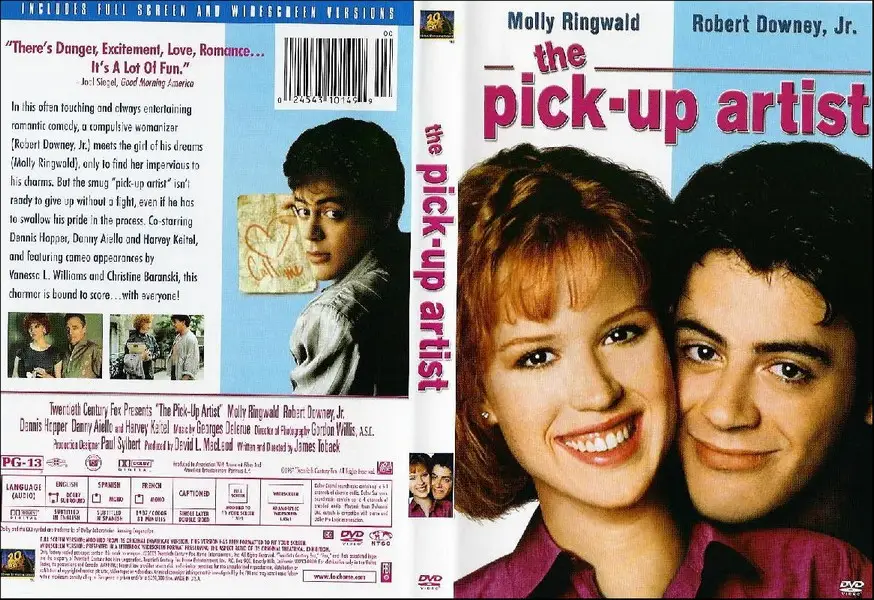 They may also access existing anchors from the past, tapping into past emotional states by retriggering a blissful experience or by reenacting a trauma they know youve already experienced.
They may also access existing anchors from the past, tapping into past emotional states by retriggering a blissful experience or by reenacting a trauma they know youve already experienced.
Anchoring in Pick-up Artistry
Pick-up artists can use emotional anchors in specific ways to sexually escalate. They may condition you to associate certain environments, situations, or moods with them. This can be done through grand gestures or subtle moments. For example, a narcissistic pick-up artist might have a habit of spontaneously kissing you in the middle of a public place (whether in a fancy restaurant or the middle of the street) so that you associate those specific locations with them, as well as a mood of romance with being with them.
These are memories they are purposely implanting so that whenever you pass by that location or watch a romantic film with those same scenarios, you remember them and access the same emotional states of arousal and bliss. Pick-up artists may also add on physical anchoring as a way to make their targets associate their touch, voice, gestures or scent with positive memories and emotional states. For example, a woman might wear a certain delicious smelling perfume that her date comes to associate her with whenever he comes across a similar scent. Or, a man might speak in a deeper voice whenever hes speaking about something sexual, to get a woman to feel aroused even when hes speaking about innocuous things in the same type of voice.
Pick-up artists may also add on physical anchoring as a way to make their targets associate their touch, voice, gestures or scent with positive memories and emotional states. For example, a woman might wear a certain delicious smelling perfume that her date comes to associate her with whenever he comes across a similar scent. Or, a man might speak in a deeper voice whenever hes speaking about something sexual, to get a woman to feel aroused even when hes speaking about innocuous things in the same type of voice.
Become aware of anchors, as they can add to the addictive nature of being with a narcissist. You can unanchor yourself by observing any impulsive behavior youre engaging in around the narcissist. What is the impulsive behavior tied to? What triggers it? For example, you might find that you’re drawn to a certain song which makes you remember the narcissist vividly because you slow-danced to it. You might feel compelled to reach out to the narcissist whenever you hear that song. You can start to “unanchor” the trigger by taking note of it whenever it occurs. You may then decide to establish a new association to this song (doing a new memorable activity preferably when you’re in a positive emotional state which involves the song). Or, you can rework that anchor by repeatedly and actively remembering the narcissist’s true nature rather than the romantic memory whenever you hear it.
You can start to “unanchor” the trigger by taking note of it whenever it occurs. You may then decide to establish a new association to this song (doing a new memorable activity preferably when you’re in a positive emotional state which involves the song). Or, you can rework that anchor by repeatedly and actively remembering the narcissist’s true nature rather than the romantic memory whenever you hear it.
This is a way of anchoring yourself in a way that allows you to move forward. You can then create newer, healthier associations with those same environments, situations, triggers, or moods which have nothing to do with the narcissist.
Manipulators only looking for sex are usually not going to be direct about their agenda unless its part of a specific script or tactic theyre using to appear dominant. They will instead dress up their intentions: they will pretend theyre interested in getting to know you, even to the point of acting as if they want a relationship or can’t wait to go on more dates with you. Some will even go as far as to degrade other manipulators and players as a form of grandstanding to make you believe theyre one of the good guys.
Some will even go as far as to degrade other manipulators and players as a form of grandstanding to make you believe theyre one of the good guys.
This covert nice guy ploy is nothing new: covert narcissists have been using it for decades underhandedly to misrepresent their intentions and character, and to get what they want. Some will even go as far as to talk about how they’re not interested in rushing things physically at all – just to convince you that they are of enough sound character to sleep with.
Escalation and Testing of Boundaries
Pick-up artists also use progressive touching or what is known as kino escalation to get physical from the very beginning and gradually escalate sexually with their targets. They use selective touch in order to get their victims more progressively comfortable with them. For example, they may first touch your arm within minutes of meeting you, assess your reaction and comfort level with that, then move onto grazing your knee.
This is not unlike the ways in which narcissists escalate with their victims by testing both the emotional and physical boundaries of their victims. These types may insert sexual jokes on the first date to assess your reaction or give you a cruel put-down to see whether you’re malleable enough to continue to invest in them. If you notice anything that makes you uncomfortable – whether it’s a condescending or crude behavior, gesture or remark, act accordingly and detach from the person as soon as possible. Do not allow them to continue to “test” you, because they will continue to escalate.
Predatory or Seductive Eye Contact
Pick-up artists are also taught the art of maintaining seductive eye contact to convey so-called alpha dominance. Predatory psychopaths and narcissists maintain such eye contact naturally, often without blinking or looking away, and are said to have a reptilian gaze.
As Dr. Robert Hare, author of Without Conscience, writes:
Many people find it difficult to deal with intense, emotionless, or predatory stare of the psychopath.
Normal people maintain close eye contact with others for a variety of reasons, but the fixated stare of the psychopath is more of a prelude to self-gratification and the exercise of power than simple interest or empathic caringSome people respond to the emotionless stare of the psychopath, with considerable discomfort, almost as if they feel like potential prey in the presence of a predator.
Research has indicated that for one to feel increasingly close with someone, all it takes are a few moments of intense eye contact and the disclosure of personal details (Aron, 1997). Prolonged eye contact also releases oxytocin, the same “love” hormone that bonds mother and child. Pair eye contact with a sociopath’s premature disclosure on dates, and you’ve got yourself a recipe for toxic love.
The Sexually Liberated Guy Act
Some pick-up artists (especially more covert predators) also use the Sexually Liberated Guy act to make their targets more psychologically comfortable with the idea of sex. While anyone can be a manipulator, male or female, this particular tactic is primarily used by narcissistic males preying on female victims because it works with gender stereotypes and social norms.
While anyone can be a manipulator, male or female, this particular tactic is primarily used by narcissistic males preying on female victims because it works with gender stereotypes and social norms.
In this technique, a male pick-up artist wants to seduce a woman into bed. He uses his awareness of what its like to be a woman and the sexual double standards she is likely to have experienced against her to do so.
Lets say Jerry is trying to woo Natasha into spending the night at his place after a romantic first date. When she appears hesitant, he might say something like, You know, I can see why its hard for a woman to let go sexually. Its sad how society restricts a womans sexuality even these days. In my opinion, a woman should be able to have sex whenever she likes, whether on the first date or the ninth.
In effect, hes given her permission to tap into her sexual desires by letting her know she wont be shamed if she says yes. This is, of course, assuming that sexual double standards are the only thing holding her back from sleeping with him.
To counteract this tactic, firmly tell the person that your decision not to sleep with him has nothing to do with sexual double standards and everything to do with your own personal comfort levels. This usually puts the lid on whatever baloney the pick-up artist is attempting to feed you and he will either redirect or leave you alone.
The Big PictureIn order to resist being played, you have to learn the rules of the game. As manipulative as some of these tactics are, its wise to brush up on PUA terminology and narcissistic manipulation tactics in order to protect yourself. Unless you know what to look for, you wont always realize when youre having the wool pulled over your eyes and that is exactly what the wolf in sheep’s clothing is hoping for.
7 Pickup Artist Techniques To Look Out For
Life
by Kristine Fellizar
Sadly, not everyone you meet will have your best interests at heart.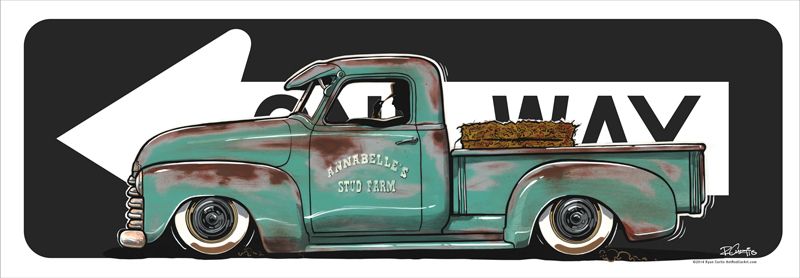 Pickup artists, for instance, make a game out of using certain techniques in their dating strategy in order to get targets to have sex with them. Some of these pickup artist tactics can be fairly obvious. But since they can also be effective, it's important to know how to spot them.
Pickup artists, for instance, make a game out of using certain techniques in their dating strategy in order to get targets to have sex with them. Some of these pickup artist tactics can be fairly obvious. But since they can also be effective, it's important to know how to spot them.
Pickup artist techniques became pretty well known after Neil Strauss’s book, The Game: Undercover in the Secret Society of Pick-up Artists, became mainstream over a decade ago. The book, which has been called a “misogynistic pickup manual,” features dangerously manipulative tricks for men looking to get women into bed. In recent years, Strauss himself has called the techniques “objectifying and horrifying.”
"Like narcissists and sociopaths, a pickup artist is all about using and exploiting others for personal gain," dating coach Connell Barrett, tells Bustle. Typically, a pickup artist is a person who studies the art of manipulating women by using sophisticated tactics, lies, and psychological tricks to seduce them.
According to Barrett, a pickup artists see sex as a form of conquest, not connection. "A woman is a 'target,' an interaction is a 'set,' and he'll try to take her to a 'seduction location,'" he says. "There’s nothing wrong with learning to be a better, more confident dater. But it should be about connection, not conquest." Pickup artists are all about the latter.
It's not always easy to tell if someone is being genuine with you or if they truly don't have your best interests at heart. So here are some shockingly effective pickup artist techniques experts say to be aware of.
1
The Will Gradually Escalate The Touching
Andrew Zaeh for Bustle
"Pickup artists use a gradually escalating system of physical touching that some call 'kino escalation,'" Barrett says. The idea here is simple enough — a pickup artist will make their intended target comfortable with the idea of getting physical by easing into it and testing your boundaries. For instance, they might start by greeting you with a hug or a high-five. Later on, they'll place a hand on your back or brush the hair out of your eyes.
For instance, they might start by greeting you with a hug or a high-five. Later on, they'll place a hand on your back or brush the hair out of your eyes.
The main goal here is to get a woman into bed. If that's not something you're interested in, state your boundaries and be firm. Call them out on it. "There’s nothing a pickup artist hates more than getting 'caught' using tricks and techniques," Barrett says. "It’s like kryptonite to them." If you're not completely comfortable calling someone out, you can try brushing off their touches, or you can attempt to leave the situation. Put a little more physical distance between the two of you. Pickup artists use physical escalation to see how far they can go. So if you're not feeling it, they should back off.
2
They Will Play Up The Charm When You First Meet And Use Tactics Like "The Spin Move"
Andrew Zaeh for Bustle
Watch out for those folks who, when they meet you, take your hand and twirl you around like you're starting a dance. It may seem like a silly yet suave way to start a date. But according to Barrett, it's a "pick up artist 101 trick" that's used to begin physical escalation. "If you meet someone at a bar or club and they spin you within a minute of meeting you, there’s a good chance they're a pickup artist, or were trained by one." Anytime someone seems "too smooth" or "too good to be true" and it raises red flags, don't ignore it. Your gut feeling may be telling you something really is off.
It may seem like a silly yet suave way to start a date. But according to Barrett, it's a "pick up artist 101 trick" that's used to begin physical escalation. "If you meet someone at a bar or club and they spin you within a minute of meeting you, there’s a good chance they're a pickup artist, or were trained by one." Anytime someone seems "too smooth" or "too good to be true" and it raises red flags, don't ignore it. Your gut feeling may be telling you something really is off.
3
They'll Pretend To Be Whoever You Need Them To Be
Andrew Zaeh for Bustle
Similar to sociopaths, Barrett says pickup artists will project a false image of themselves for whatever fits their purpose. Sometimes, they'll do it to hide their insecurities. Other times, they'll do it in order to be whoever they think their target wants them to be. Another trick is acting sweet and romantic as a form of manipulation, Barrett says. "It’s effective because it speaks to what [some people] want: a cool, trustworthy partner to connect with.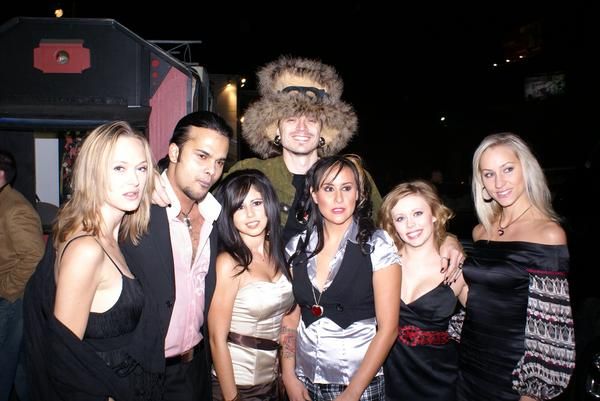 "
"
They may start this by trying to find things in common, or talking about the future with you, he says. "Some even use 'statements of vulnerability' to amplify the perception that they're sensitive and relatable." According to him, this typically works because many singles are looking for the love and connection that comes with having a partner.
4
They'll Use "Negging"
Ashley Batz/Bustle
"This is an 'old-school technique' that Neil Strauss, wrote about in The Game and it’s still being taught," Barrett says. A "neg" is a cross between an insult and a compliment. According to him, it’s a line that pickup artists use to lower a woman's self-esteem or to make them self-conscious, and as a result, make her feel compelled to seek validation from him.
"Pay no attention to backhanded compliments or notice if someone crow-bars in comments about your incompatibility as a couple ('You and I would never get along — our personalities are too different')," Barrett says. "These are signs they're trying to 'game' you, rather than genuinely connect with you." In short, someone who likes you won't feel the need to attack your self-esteem.
"These are signs they're trying to 'game' you, rather than genuinely connect with you." In short, someone who likes you won't feel the need to attack your self-esteem.
5
They'll Use "The Statement Of Empathy"
Andrew Zaeh for Bustle
This is a phrase that pickup artists use to diffuse a situation when their attempts to get physical makes a target feel uncomfortable. Like narcissists and sociopaths, pickup artists want someone to feel they are empathetic and have the best intentions, Barrett says. That's where the "statement of empathy" comes in. It's a scripted line that's often used right after a pickup artist tries to touch or kiss you, and you're not into it. Some examples include, "Sorry, I'm a big hugger," or "Sorry, I just got caught up in the moment."
This is meant to show that the pickup artist understands how you are feeling, but also offers an excuse that can be forgiven, Barrett says. "It’s meant to build trust, because it supposedly shows that he can read social cues.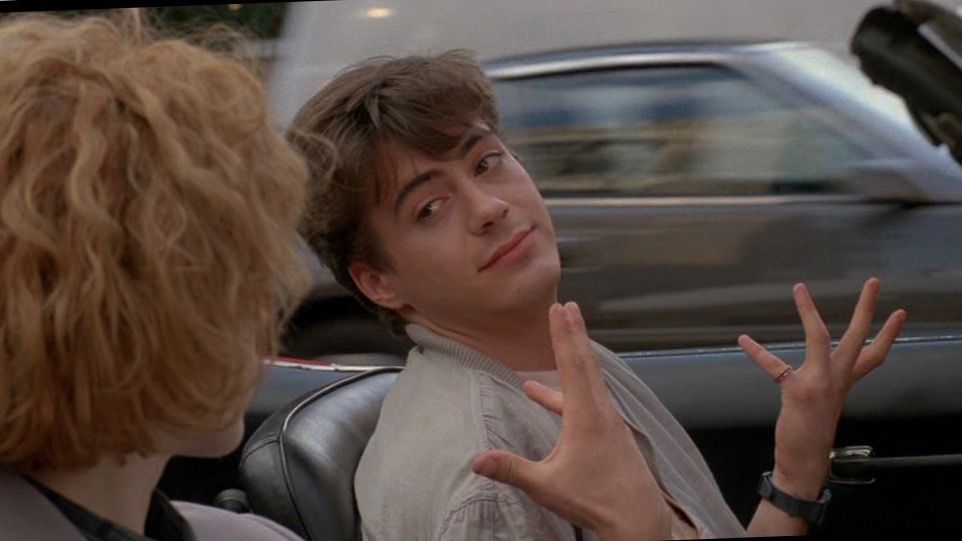 "
"
6
They'll Do What They Can To Make You Believe That You're Special
Andrew Zaeh for Bustle
As psychotherapist Patti Sabla, LCSW, tells Bustle, people who don't have your best interests at heart will successfully charm you by making you feel special and appreciated. "Some enjoy the challenge of trying to get others to do things for them, like making special accommodations or giving them special attention or treatment," Sabla says. "When they get this special treatment, they act totally grateful."
They're likely to keep up the act until they get bored. It's not easy to tell if someone's just using you or being genuine, especially if things are new. So be cautious. "Don't show all of your cards or give someone complete access to your life until they can prove they can be trusted," Sabla says. "Sociopaths and narcissists, for instance, prey on the kind and the weak. You can still be kind, but don't let that kindness turn into weakness. "
"
7
They'll Flirt With Other People To Try To Make You Jealous
Ashley Batz/Bustle
"In Robert Cialdini’s book, Influence, he talks about the power of social proof to persuade and coerce, and that’s what pickup artists are trying to do," Barrett says. For instance, a pickup artist will flirt with the bartender in front of their date, talk a lot about exes, or tell a made-up story about how they got hit on that day to "prove" their worth. The thinking goes, if many people desire and want them, then anyone should. So just be aware of someone who's trying to play up their desirability.
Unfortunately, there are sketchy people out there who are only looking out for themselves. In order to avoid being manipulated by a pickup artist or anyone who doesn't have your best interest at heart, go with your gut. If something feels off to you, don't ignore it. Always remember, if someone's truly interested in you, they won't need to resort to any of the above tactics.
The choice of speech tactics and language means adequate to the nature of the speech situation. Causes of communication failures, their prevention and overcoming
Goals:
1) repeat the spelling H and HH, signs in direct speech and dialogue;
2) to give the concept of speech strategy and tactics, the need for their correct choice in accordance with the speech situation for successful communication;
3) give examples of the use of different speech tactics in accordance with one speech strategy, analysis of their success; nine0005 4) identify the causes of communication failure;
5) outline options for overcoming a communicative failure by changing tactics.
1. Introduction to the topic of the lesson.
Chekhov was an incomparable nn th artist. Artist of life.
M. Gorky.
Every day we find ourselves in a variety of speech situations. But regardless of who we are talking to and about what, in what environment, we want to succeed. We have already talked about the conditions for the success of verbal communication. Name them:
We have already talked about the conditions for the success of verbal communication. Name them:
- desire to communicate;
- common topic;
- proficiency in a common language.
But the observance of these conditions is still not enough for the act of verbal communication to be successful. It is important to choose the right speech tactics.
Read the topic of the lesson and formulate the goals that we must achieve today.
(see goals)
One of the most famous Russian writers, a subtle psychologist and a truly intelligent person, will help us to do this. nine0005 Read the epigraph to the lesson and write it down in the form of a direct speech, placing the words of the author inside. Explain the spelling H or HH.
(Entry in a notebook: "Chekhov was an incomparable nn th artist, - wrote M. Gorky. - An artist of life.")
How do you understand this phrase?
(Children say that the plots described in Chekhov's stories are taken by the author from reality or are so realistic that it is easy to believe in them. In addition, his stories are highly artistic.)
In addition, his stories are highly artistic.)
Today we are working with one of Chekhov's stories, in which he solves the problem of the relationship between parents and children. And it's called "Home".
2. Work on the topic of the lesson.
1. Write down a fragment from the story and answer the question: why, if all the above conditions are met, is the father not sure of the success of his conversation with his son?
Dictation.
Bykovsky sat down in an armchair in front of the letter and at the table, closed his eyes and became concentrated.0003 nn about thinking. For some reason, he pictured in his imagination his Seryozha with a huge, arshi nn th cigarette, in clouds of tobacco smoke, and this caricature made him smile; at the same time, the governess's serious, preoccupied face evoked in him memories of a time long past, when smoking at school and in the nursery inspired teachers and parents with a terrible, not quite understandable horror. .. “But what am I going to tell him, though? » - Yevgeny Petrovich thought in perplexity nn . nine0010
.. “But what am I going to tell him, though? » - Yevgeny Petrovich thought in perplexity nn . nine0010
Check.
What punctuation rules did you remember? What determines the isolation of the word but ? (We recall the rule of putting commas between homogeneous members, not connected by unions, between parts of the SSP and SPP, punctuation marks in direct speech. The word , however, is isolated, since it is not at the beginning of the sentence and plays the role of an introductory one)
What is the communicative goal does the father put in front of him? (to convince of the dangers of smoking, to achieve a promise not to smoke)
Does he know what to say? (yes, he can make many arguments against smoking)
What is the difficulty? (the difficulty is how to talk to your son so that he understands the harm of smoking)
What does the word "how" mean? (in what style, with what emotions, how loudly, to scold or convince . ..)
..)
In linguistics, there are special concepts for designating the very method of communication that the father chooses now.
What is speech strategy and tactics? nine0010
2. Working with a dictionary.
STRATEGY, and, pl. no, w. [Greek stratēgia < stratos army + agō I lead]. 1. The science of warfare, the art of warfare. Victorious s. C. preemptive strike. | | Wed tactics 1. 2. trans. The art of leading the social and political struggle. S. liberation movement.
TACTICS, and, pl. no, w. [< Greek taktika art of troop formation < tassō troop formation]. 1. The art of preparing and conducting combat, as well as the science of combat. T. sudden impact. Tactics lessons. | | Wed strategy1. 2. trans. The totality of means and methods of social and political struggle, ways to achieve the goal. T. struggle for power. Expectant t. | | Wed policy3, strategy2. 3. trans. Someone's line behavior. I know your cunning tactics! Tactical - pertaining to tactics1-3. | | Wed politics4. [1] nine0010
[1] nine0010
3. Is there a terminological meaning of these words that is relevant to linguistics? Let's make a definition of linguistic concepts on the basis of the material provided by the dictionary.
Strategy is the goal of verbal communication.
Tactics - a set of means and techniques of verbal communication.
Is it a coincidence that terms appeared in linguistics that are common with military science?
What happens if the father chooses the wrong tactics? ("the war" will be lost)
4. What methods can be used?
The individual tasks that you received in the last lesson will help answer this question. The guys make small oral statements against smoking, the task of the class according to the proposed plan is to characterize each message:
1. Who could use such speech tactics?
2. in what speech situation would it be appropriate?
3. What linguistic means are typical for it?
Individual tasks. (a doctor, a policeman, a friend, a neighbor in the stairwell are against smoking)
Are these tactics always effective? What does it depend on? (The proposed tactics are not always effective: it is necessary to take into account not only the topic and goals of the statement, but also the age, psychological, social characteristics of the interlocutors, the situation of communication, the relationship that binds the participants in communication, etc. )
)
5. What tactics will he use father? nine0005 We write down the entire first fragment, the next 2 fragments are cards, performed individually, questions to them.
— ... I'm angry with you and don't love you more . So know, brother: I don’t love you , and you don’t son ... Yes.
Seryozha looked at his father intently, then turned his gaze to the table and shrugged his shoulders.
- Now Natalya Semyonovna complained to me that you smoke ... Is that true? Do you smoke? nine0005 - Yes, I once smoked ... That's right! ..
- I am very, very dissatisfied with you! Before you were a good boy, but now, I see, you have deteriorated and become a bad .
Yevgeny Petrovich adjusted Seryozha's collar and thought: "What else can I say to him?"
What other way of transmitting someone else's speech did you remember? (Form of dialogue) Why are there two ways of transmitting someone else's speech in a language? (Dialogue as a way of transmitting someone else's speech is more dynamic, economical, allows you to draw up replicas without the words of the author, to convey the features of speech. But this method is not appropriate in all situations, for example, when recording the statements of literary critics and critics.)
But this method is not appropriate in all situations, for example, when recording the statements of literary critics and critics.)
Did the father achieve his goal? Why? (His tactics do not work, because it is not true that the father does not love his son, and the boy knows this, therefore he treats the words of Evgeny Petrovich with distrust). Specify the characteristic lexical means of this speech tactics. (These units are underlined in the text.)
6. How will he try to correct the situation? What tricks does he use the second time?
Read: Card 1
Card #1.
1. In the card, insert the missing letters and punctuation marks, explain them. nine0005 2. Prepare for expressive reading.
Yes, he continued badly. I did not expect this from you. (First) you have no right to take tobacco that does not belong to you. Each person has the right to use only his own (n, nn) good, if he takes someone else's ... he is not a good person! (That's not what I'm telling him! Yevgeny Petrovich thought. ) You have horses and pictures... I don't take them, do I? Maybe I would like to take them, but ... because they are not mine but yours!
) You have horses and pictures... I don't take them, do I? Maybe I would like to take them, but ... because they are not mine but yours!
Take it if you want! said Seryozha, raising his eyebrows. Please, dad, don’t be shy to take it! This little yellow dog that you have on your table is mine, but I'm fine ... Let it be worth it! nine0010
Why didn't this tactic work? (The prosecutor switches to his usual court language expressions: you have no right, you don’t belong, you have the right to use , etc. But this does not work either because the child does not understand the legal aspects of property rights, and he himself is not greedy and is ready to share with father.)
7. Third attempt. How does the father construct his speech now? Is she successful?
Read: Card 2
Card number 2.
1. In the card, insert the missing letters and punctuation marks, explain them. nine0005 2. Prepare for expressive reading.
(Secondly) you smoke.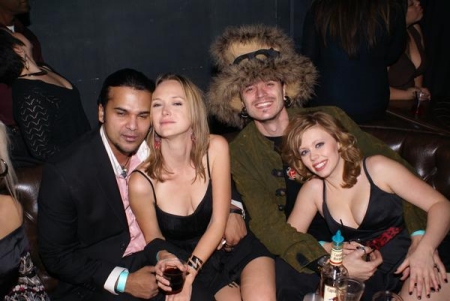 .. This is very bad! If I smoke, then it does not follow that I can smoke. I smoke and I know that it is stupid scolding and I don’t like myself for it ... (I’m a cunning teacher! The prosecutor thought.) Tobacco is very harmful to health and the one who smokes dies earlier than he should. It’s harmful for a person (n, nn) to smoke as small as you. You have a weak chest, you are not yet strong, and in weak people, tobacco smoke produces consumption and other diseases. Uncle Ignatius died of consumption. If he hadn't smoked, he might have lived to this day. nine0005 Seryozha looked thoughtfully at the lamp, touched the shade with his finger, and sighed.
.. This is very bad! If I smoke, then it does not follow that I can smoke. I smoke and I know that it is stupid scolding and I don’t like myself for it ... (I’m a cunning teacher! The prosecutor thought.) Tobacco is very harmful to health and the one who smokes dies earlier than he should. It’s harmful for a person (n, nn) to smoke as small as you. You have a weak chest, you are not yet strong, and in weak people, tobacco smoke produces consumption and other diseases. Uncle Ignatius died of consumption. If he hadn't smoked, he might have lived to this day. nine0005 Seryozha looked thoughtfully at the lamp, touched the shade with his finger, and sighed.
Uncle Ignatius played the violin well! he said. His violin is now with the Grigorievs!
Why did this method also lead to a communication failure? (The father tries to convince the boy using medical vocabulary: is harmful to health, dies earlier than it should, the chest is weak, tobacco smoke produces consumption . But he does not achieve a positive result, because children do not tend to think about their health. However, perhaps this the tactic would be successful if it were a child who has been seriously ill for a long time.[2])
But he does not achieve a positive result, because children do not tend to think about their health. However, perhaps this the tactic would be successful if it were a child who has been seriously ill for a long time.[2])
8. How does the hero manage to overcome the consequences of an incorrectly chosen tactic? What method of communication does Bykovsky finally resort to and why is he successful?
Read the extract from the printout and answer the question.
Ten o'clock struck.
"Well, boy, it's time for bed," said the prosecutor. - Say goodbye and go.
- No, dad, - Seryozha grimaced, - I'll sit still. Tell me something! Tell me a story.
- If you please, only after the fairy tale - go to bed now. nine0005 On free evenings, Evgeny Petrovich used to tell Serezha fairy tales ... Usually he began with the template “In a certain kingdom, in a certain state”, then he piled up all sorts of innocent nonsense and, telling the beginning, did not know at all what the middle and end would be . .. Serezha was very fond of such improvisation, and the prosecutor noticed that the more modest and unpretentious the plot was, the stronger it affected the boy.
.. Serezha was very fond of such improvisation, and the prosecutor noticed that the more modest and unpretentious the plot was, the stronger it affected the boy.
“Listen,” he began, raising his eyes to the ceiling. “In a certain kingdom, in a certain state, there lived an old, aged tsar with a long gray beard and ... and with a sort of mustache. Well, he lived in a glass palace that sparkled and shone in the sun like a big piece of pure ice. The palace, my brother, stood in a huge garden, where, you know, oranges grew ... bergamots, cherries ... tulips, roses, lilies of the valley bloomed, colorful birds sang ...
Yevgeny Petrovich thought and continued:
“The old king had an only son and heir to the kingdom, a boy as small as you. It was a good boy. He was never naughty, went to bed early, did not touch anything on the table, and ... and in general was a good girl. He had only one drawback - he smoked ...
Seryozha listened intently and, without blinking, looked into his father's eyes. The prosecutor continued and thought: “What next?” He smeared and chewed for a long time, as they say, and ended up like this:0005 - From smoking, the prince fell ill with consumption and died when he was 20 years old. The decrepit and sickly old man was left without any help. There was no one to govern the state and protect the palace. Enemies came, killed the old man, destroyed the palace, and now there are no cherries, no birds, no bells in the garden ... That's it, brother ...
The prosecutor continued and thought: “What next?” He smeared and chewed for a long time, as they say, and ended up like this:0005 - From smoking, the prince fell ill with consumption and died when he was 20 years old. The decrepit and sickly old man was left without any help. There was no one to govern the state and protect the palace. Enemies came, killed the old man, destroyed the palace, and now there are no cherries, no birds, no bells in the garden ... That's it, brother ...
Such an end seemed to Yevgeny Petrovich himself ridiculous and naive, but the whole fairy tale made a strong impression on Seryozha. Again his eyes were covered with sadness and something like fear; for a minute he gazed pensively at the dark window, shuddered, and said in a low voice:0005 — I won't smoke anymore...
Why did this tactic lead to victory? (It corresponds to the age of the child, there is no direct upbringing, the emphasis is not on the harm to the child himself, but on the grief of the father, and Seryozha loves his father very much [2])
3. Consolidation.
Consolidation.
What are the reasons for the communication failures that befell the lawyer? (Incorrectly chosen speech tactics that do not take into account the nature of the child and the situation of communication) Why is it so important to choose the right tactics of speech behavior? (Otherwise, communication will be unsuccessful, the initiator will not be able to achieve his communicative goal) How to get out of the situation if the tactics were initially chosen unsuccessfully? (use different tactics)
A mini essay at the beginning will help to consolidate our knowledge on the topic:
“Just as a commander chooses the best battle tactics before the start of hostilities, on which victory or defeat depends, so does every person…”
4. Homework.
Find an example of communicative failure in the stories of A.P. Chekhov, formulate its causes.
Literature.
1. Krysin L.P. Explanatory Dictionary of Foreign Words / CD "Big Encyclopedia of Cyril and Methodius 2004"
2. http://www.refbank.ru/rus/9/rus9.html
color palette rules in painting
Color is the main key to our emotions. It helps to understand events, the meaning of a certain life period. Color is a flow of energy that can convey both positive and negative. Everyone has a chance to feel this energy not only in museums, galleries or the Internet, looking at works of art, but also to buy paints and pick up a brush. In the process, it is very important to explore the color, with the help of the necessary combinations to control emotions. nine0010
Artists are now very seriously concerned about color issues. Many paintings in our exhibitions speak of the absence of a color culture. In some - inappropriate, tasteless brightness. In others - dullness, given out by the authors for the subtlety of color. Meanwhile, the foundations of the true science of color are in the knowledge of images, in the right combination. You need to feel this range, understand what it conveys, what emotion each color gives individually and in combination with other colors. There are some good tricks to start exploring the color palette of your future masterpiece. nine0010
You need to feel this range, understand what it conveys, what emotion each color gives individually and in combination with other colors. There are some good tricks to start exploring the color palette of your future masterpiece. nine0010
1. Copying colors
The first rule is to learn from the work of others. Artists of different eras constantly took other people's elements and very often got the desired result. This is an immense field for experimentation. After all, what is now the number of masterpieces that we enjoy.
Let's imagine that you have a sketch drawn, but you have no idea how to properly manage the color scheme. The problem is quite common. After all, how many good works can be ruined by choosing the wrong colors. To solve this problem, we can look for similar examples, look at the color palette used, compare it with our expected result, and see if it feels right to us. nine0010
Most likely, there will be 2-3 primary colors and 3-5 secondary colors in the required range.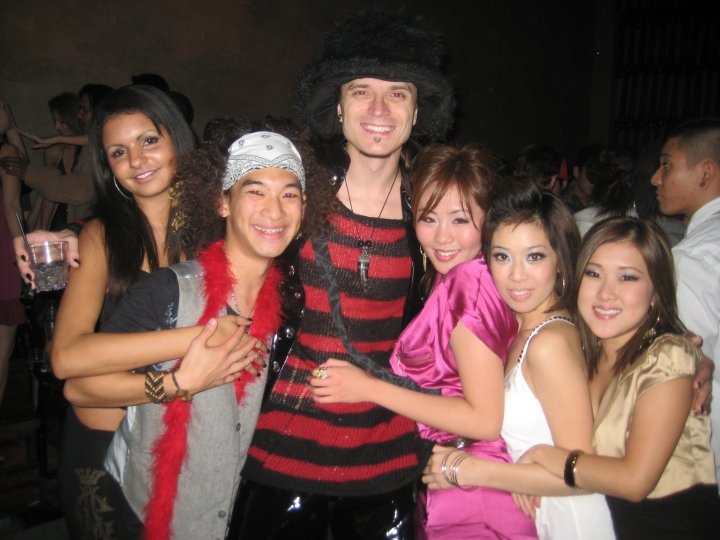 On the draft, you can practice mixing paints to achieve the desired result. The most important task is to maintain the main color of the picture.
On the draft, you can practice mixing paints to achieve the desired result. The most important task is to maintain the main color of the picture.
2. Using a close color palette
You should definitely think about the color palette in advance. It is undesirable to apply one color and only then think out what will suit. A good tactic is to choose one shade and move from it in different directions. nine0010
3. Reverse Technique - Contrasts
At first, working with the movement technique from one color can be boring and monotonous. The viewer will immediately look for a color accent. Most artists know this and apply this technique. The best way to help us in this is nature.
With the help of such contrasts, we can distinguish the main from the general, the essential from the unimportant, and correctly place the accents.
3. Don't be afraid of dirt
Different designs require different approaches and techniques. In academic painting, the main approach is natural color palettes with smooth transitions. What is the best way to convey, for example, the beauty of a winter-spring landscape, where the sky is blue, the young grass is green, and the snow is still white? You can try adding some dirt. This is not dirt in the literal sense, but just a mixture of colors for smooth transitions. This technique will make your work more believable, unobtrusive. nine0010
In academic painting, the main approach is natural color palettes with smooth transitions. What is the best way to convey, for example, the beauty of a winter-spring landscape, where the sky is blue, the young grass is green, and the snow is still white? You can try adding some dirt. This is not dirt in the literal sense, but just a mixture of colors for smooth transitions. This technique will make your work more believable, unobtrusive. nine0010
4. Monochrome
If you're having problems with your color palette, try playing with shadows. The thing that is very difficult to spoil is monochrome. The choice of an additional one color will complicate the task a little. But this method will also prevent confusion.
Of course, painting schools have more precise rules. You may be shown examples of one artist, but if you try to write in this style, your work may be subject to harsh criticism. Well, if you yourself begin to draw at home, then you have nothing to fear.